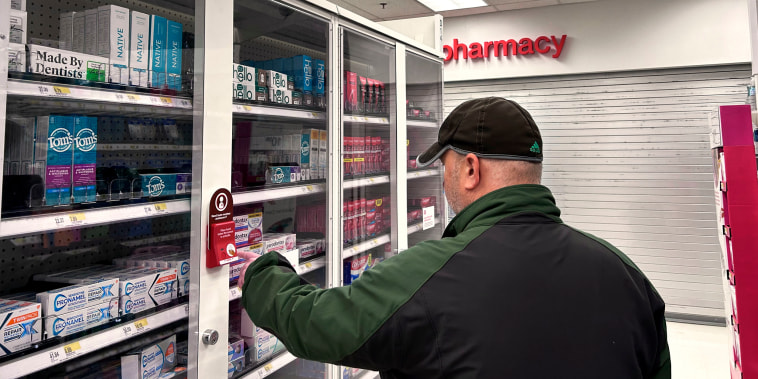“Running Away from the Facts: Is a Shoplifting Surge on the Horizon?

As the pandemic drags on, many retailers are facing unprecedented challenges; from limited customer access to unprecedented financial difficulty, the situation looks bleak for many small businesses. But, surprisingly, one of the greatest challenges that shop owners are facing in this difficult period is a resurgence in shoplifting. Many stores have reported higher than usual numbers of shoplifting, with some reporting losses of up to 70% in the first few months of the pandemic.
However, despite these reports, some experts warn that the fears of a shoplifting surge may be running away from the facts. Reports from the Confederation of British Industry (CBI) suggest that many of the reported theft incidents are actually a result of ‘shrinkage’, or the disappearance of inventory between purchase and delivery. Shrinkage can be caused by poor inventory control, incorrect supplier labeling, and employees pilfering stock. The CBI’s research suggests that most of the reported shoplifting incidents are actually cases of shrinkage, rather than the result of criminal activity.
The CBI’s reports suggest that shops may be underestimating the value of shrinkage and overestimating the figures related to shoplifting. This means that shop owners may be implementing costly security measures to address a problem that is not as big as they think. The impact of this is that some shops could end up with over-inflated costs when trying to combat shoplifting, while the underlying problem is actually related to internal inventory issues.
One way for shop owners to counteract this problem is to re-evaluate their current inventory systems and to assess their current staff training. By ensuring that effective inventory procedures are in place and that staff are well-trained, shop owners can reduce the possibility of shrinkage – and therefore the risk of shoplifting losses.
Ultimately, the issue of shoplifting and shrinkage must be addressed in order for stores to remain successful in the current climate. To do this, shop owners must take a data-driven approach, understanding the role that both shoplifting and shrinkage play in their overall expenses. By properly measuring the shrinkage and shoplifting figures, shop owners can devise a tailored preventative approach to the problem. In doing this, shops can be sure that they are taking the necessary steps to protect their goods and revenue, and are not devoting unnecessary costs to a phantom threat.
As the pandemic drags on, many retailers are facing unprecedented challenges; from limited customer access to unprecedented financial difficulty, the situation looks bleak for many small businesses. But, surprisingly, one of the greatest challenges that shop owners are facing in this difficult period is a resurgence in shoplifting. Many stores have reported higher than usual numbers of shoplifting, with some reporting losses of up to 70% in the first few months of the pandemic.
However, despite these reports, some experts warn that the fears of a shoplifting surge may be running away from the facts. Reports from the Confederation of British Industry (CBI) suggest that many of the reported theft incidents are actually a result of ‘shrinkage’, or the disappearance of inventory between purchase and delivery. Shrinkage can be caused by poor inventory control, incorrect supplier labeling, and employees pilfering stock. The CBI’s research suggests that most of the reported shoplifting incidents are actually cases of shrinkage, rather than the result of criminal activity.
The CBI’s reports suggest that shops may be underestimating the value of shrinkage and overestimating the figures related to shoplifting. This means that shop owners may be implementing costly security measures to address a problem that is not as big as they think. The impact of this is that some shops could end up with over-inflated costs when trying to combat shoplifting, while the underlying problem is actually related to internal inventory issues.
One way for shop owners to counteract this problem is to re-evaluate their current inventory systems and to assess their current staff training. By ensuring that effective inventory procedures are in place and that staff are well-trained, shop owners can reduce the possibility of shrinkage – and therefore the risk of shoplifting losses.
Ultimately, the issue of shoplifting and shrinkage must be addressed in order for stores to remain successful in the current climate. To do this, shop owners must take a data-driven approach, understanding the role that both shoplifting and shrinkage play in their overall expenses. By properly measuring the shrinkage and shoplifting figures, shop owners can devise a tailored preventative approach to the problem. In doing this, shops can be sure that they are taking the necessary steps to protect their goods and revenue, and are not devoting unnecessary costs to a phantom threat.